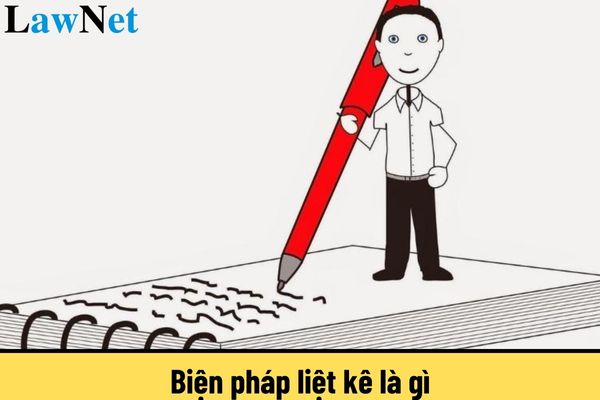What is the rhetorical device of enumeration? What are the effects of the rhetorical device of enumeration? In Vietnam, what are the regulations on innovation in assessing students at various educational levels in Literature?
What is the rhetorical device of enumeration?
Enumeration is a rhetorical device where the writer or speaker arranges a sequence of words or phrases of the same category in a sentence or a paragraph to create a strong impression and high effectiveness in the description, narration, or emotional expression.
What are the effects of the rhetorical device of enumeration?
Increase expressive effectiveness: Helps the sentence become lively, appealing, easier to understand, and more memorable.
Emphasize ideas: The more enumeration there is, the clearer the emphasized idea becomes, leaving a strong impression on the reader or listener.
Prove assertions: The enumerated objects or phenomena make the argument more convincing.
Create rhythm: The repeated words create a regular rhythm, giving an impression of richness and diversity.
Types of the rhetorical device of enumeration:
Ascending Enumeration: Words are listed in ascending order of degree or intensity.
Example: "He is not only intelligent but also diligent, persistent, and always achieves high results in his studies."
Descending Enumeration: Words are listed in descending order of degree or intensity.
Example: "She is not only beautiful but also gentle, graceful, and kind."
Parallel Enumeration: Words are listed at the same level.
Example: "In summer, I like to go to the beach, eat ice cream, and play with friends."
Illustrative Examples:
Enumeration in descriptive writing: "The roses bloom with various colors: bright red, pink, pure white, and vibrant yellow."
Enumeration in narrative writing: "The child loves to play games like building blocks, coloring, reading stories, and playing ball."
Enumeration in argumentative writing: "To succeed, we need effort, persistence, creativity, and continuous learning."
*Note: The information is for reference purposes only./.

What is the rhetorical device of enumeration? What are the effects of the rhetorical device of enumeration? In Vietnam, what are the guidelines for assessing students at various educational levels in Literature? (Image from the Internet)
In Vietnam, what are the regulations on innovation in assessing students at various educational levels in Literature?
Under Section 2 of Official Dispatch 3175/BGDDT-GDTrH in 2022, the regulations on innovation in assessing students at various educational levels in Literature are:
- Ensure that positive aspects of their individuality, imagination, language skills, literary abilities, symbolic thinking, and logical thinking are enhanced.
- Focus on designing and using tasks and questions that require students to apply learned knowledge and skills in reading, writing, speaking, and listening to new contexts and materials; create opportunities for students to explore new knowledge, propose ideas, and create new products; stimulate associations, imaginations, and leverage their life experiences in the process of reading, writing, speaking, and listening.
- In assessing the results at the end of each semester, school year, or educational level, avoid reusing texts that have been studied in textbooks as materials to construct reading comprehension and writing tests to accurately assess students' competency and address the issue of students merely memorizing or copying available content.
- Encourage the development and use of open-ended questions in assessment to maximize students' creativity. Develop assessment tools to minimize the subjective and emotional biases of assessors. When reviewing and assessing students' work, respect and encourage their unique ways of thinking and feeling, ensuring compliance with ethical, cultural, and legal standards.
What are the objectives of educating students at various educational levels in Literature in Vietnam?
According to Article 29 of the Education Law 2019, the objectives of educating students at various educational levels in Literature in Vietnam are:
- The objectives of general education are to help learners develop comprehensively by acquiring morals, knowledge, physical health, aesthetic values and other basic skills, develop personal abilities, flexibility and creativeness, with a view to forming the socialist Vietnamese personality and the civic duty, to preparing them for further studies of higher education, vocational education or entering the workforce, participating in the building and defending of the Fatherland.
- Primary education aims to help students form initial foundations for moral, intellectual, physical and aesthetic development and capacity, preparing them for entering lower secondary education.
- Lower secondary education is directed towards students' consolidation and development of the outcomes of primary education, provision of general and basic knowledge along with introductory understanding on techniques and career orientation to enter upper secondary education or vocational education.
- Upper secondary education is directed towards the provision of civic knowledge; students' consolidation and development of the outcomes of lower secondary education; completion of general education and acquisition of common understanding on techniques and career orientation; provision of opportunities for students to develop their personal abilities in order to choose their development direction, to enter higher education, vocational education or the workforce, contributing to the building and defending of the Fatherland.

